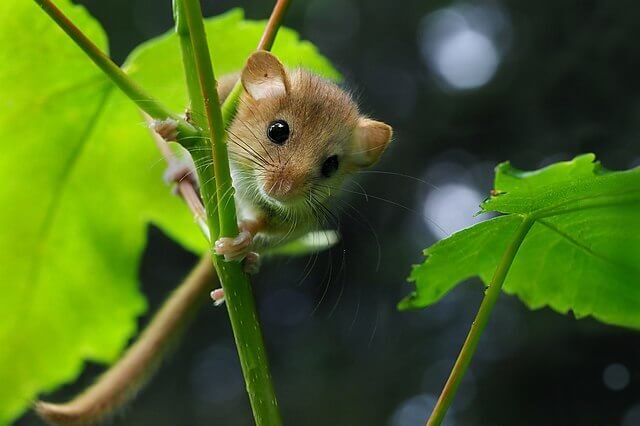
The hazel dormouse, a native British mammal, has experienced a drastic 70% decline in populations in this century, rendering it one of the most elusive species in the country.
A comprehensive study by the People’s Trust for Endangered Species (PTES) reveals that the nocturnal, tree-dwelling creatures are now extinct in 20 English counties, necessitating a reclassification of their conservation status to “endangered” on the International Union for Conservation of Nature (IUCN) red list.
Since the publication of the previous State of Britain’s Dormice report in 2019, hazel dormice have disappeared from Hertfordshire, Staffordshire, and Northumberland. The primary factor contributing to their decline is the loss of the scrubby under-storey in woodlands where these arboreal creatures live and feed during spring and summer.
Climate change exacerbates the problem, as milder winters prompt dormice to emerge from hibernation when food is scarce, resulting in a mortality rate of 40% to 70% during the hibernation period.
Ian White, a dormouse officer at PTES, said: “There’s an old Worcestershire saying: ‘Woods don’t grow beneath trees’, and we no longer have this complexity and under-storey in woods because of increased browsing by deer, but also increased shading – we don’t cut our woodlands enough.
“It’s a double-whammy. Now winters are becoming more mild and variable, there’s a danger that dormice will wake up and they can only do that so many times before they run out of energy. Wetter springs and summers also stop dormice feeding because their fur is not waterproof [so they don’t go out in rain], and they only produce on average four young per year – they don’t have the breeding potential of mice and rats.
“If the decline continues at the same rate, in another 30 years dormouse populations will have fallen by 94% since 2000, which we simply cannot let happen.”
Characterised by caramel fur, prominent black eyes, and a bushy tail, the hazel dormouse serves as a flagship species for woodland conservation, indicating broader animal and plant diversity and overall woodland health.
To address the decline, a dedicated group of volunteers, supported by PTES and other charitable partners, has been monitoring hundreds of dormouse nest boxes in woodlands since 1990, constituting the world’s longest-running small terrestrial mammal monitoring program.
Efforts to understand dormouse populations outside woodlands led to the launch of PTES’s dormouse footprint tunnel survey last year, focusing on non-woodland habitats like hedgerows and scrubland. Anecdotal evidence suggests some dormice thrive in scrubby areas near roads and railways.
White said: “Once we have data from non-woodland sites too, we can target conservation efforts more widely, which we hope will start to reverse the decline.”
The annual dormouse reintroduction program, initiated in 1993, has released over 1,112 hazel dormice into 25 woodlands across 13 counties, effectively reestablishing populations in six English counties.
Conservation initiatives include large-scale landscape projects in Warwickshire and north Wales to restore and connect prime dormouse habitats. Additionally, hedgerow planting in Yorkshire and Hampshire creates safe passages and nesting sites, contributing to dormouse conservation.
Based on their findings, PTES advocates for the reclassification of dormice as “endangered” rather than “vulnerable” on the IUCN red list, emphasising the need for heightened conservation efforts for this priority species.
White said: “We know what works for dormice, but we urgently need increased funding to implement this nationally.
“Hope is not lost, as reintroductions, monitoring, research and landscape projects offer a lifeline – and some populations appear to be thriving – but we need to do everything we can on a much bigger scale to prevent the worst case from happening.”
——————————————————————————
At Natural World Fund, we are passionate about stopping the decline in our wildlife.
The decline in our wildlife is shocking and frightening. Without much more support, many of the animals we know and love will continue in their decline towards extinction.
When you help to restore a patch of degraded land through rewilding to forests, meadows, or wetlands, you have a massive impact on the biodiversity at a local level. You give animals a home and food that they otherwise would not have had, and it has a positive snowball effect on the food chain.
We are convinced that this is much better for the UK than growing lots of fast-growing coniferous trees, solely to remove carbon, that don’t actually help our animals to thrive.
This is why we stand for restoring nature in the UK through responsible rewilding. For us, it is the right thing to do. Let’s do what’s right for nature!
Donate today at https://naturalworldfund.com/ and join in the solution!

